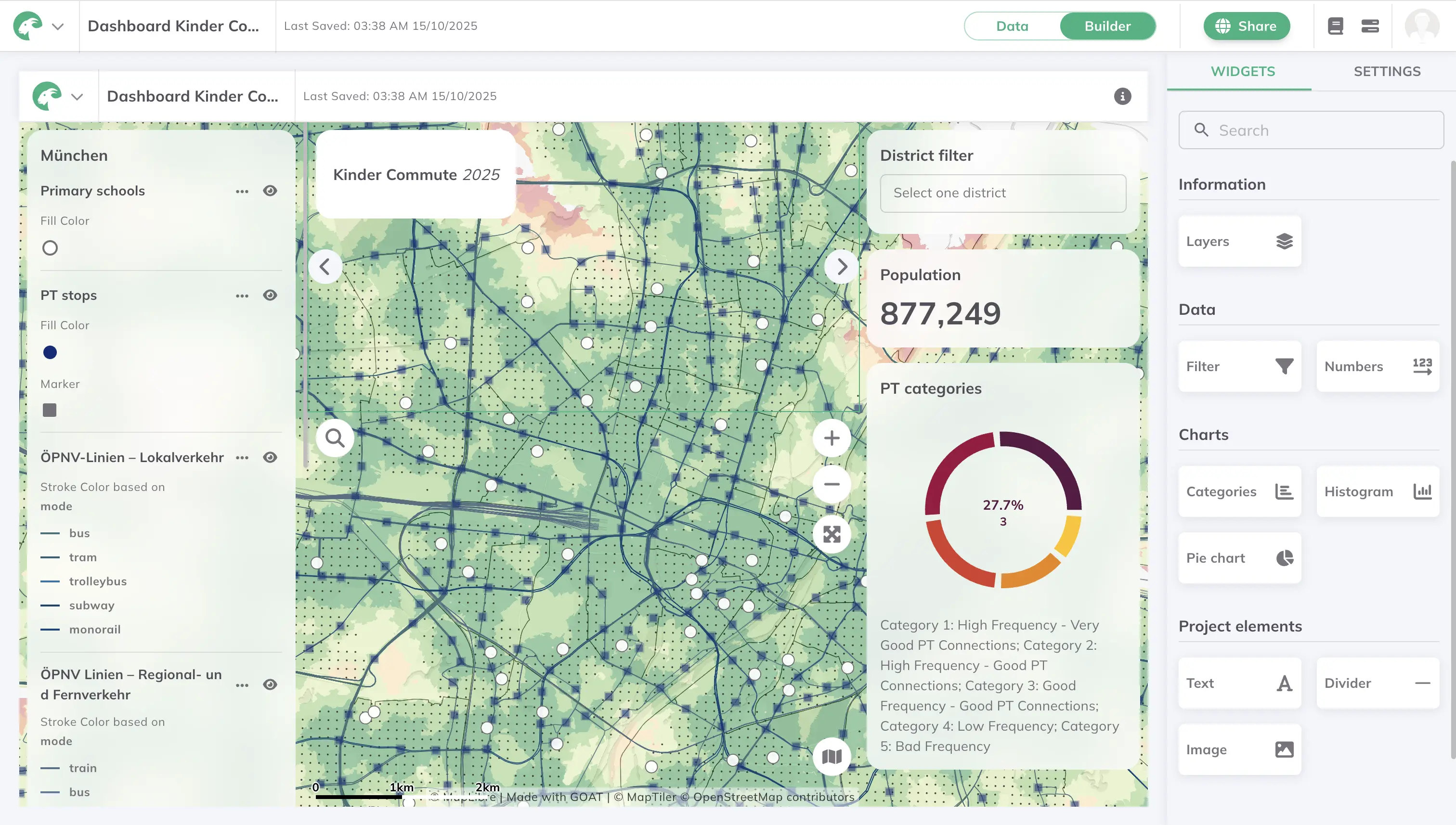GOAT

I am happy to announce that time has come for the first official release of Geo Open Accessibility Tool (GOAT). This first version already unifies some key features but much more will follow.
The people who have followed the GOAT project know that the development started way back with my Master thesis one and half years ago. Meanwhile the development became an important part of the PhD that I want to start soon and my daily work at the [Chair for Urban Structure and Transport Planning at the Technical University of Munich](https://www.sv.bgu.tum.de).
It has taken a reasonable amount of time to release this first experimental version of GOAT that can be freely and openly shared with you. I would like to thank all early adopters of GOAT , my colleagues and students, and especially [Majk Shkurti](https://github.com/majkshkurti) for helping me out when my front-end skills came to their limits.
This first release of GOAT is an initial step since GOAT still has numerous features that are work in progress. That is to say that there will be frequent enhancements and new features in the coming weeks, months and years. This site should not only serve the purpose of hosting the GOAT application but also play a vital role in acting as a contact point for the conceptual basis of GOAT and its [documentation](/docs/about). Currently, there is very limited documentation at this site but frequent additions will be done!
As first guidance the following videos shall help to understand the core features of GOAT.
This first video shows how to calculate walking isochrones at different places and how to compare their results. It also shows you how to export your calculation into common formats like GeoJSON or shapefiles.
The next video shows the interactive network modifications feature in action and gives the user an idea how this feature can be used to efficiently develop scenarios.
The third video is introducing the dynamic heatmap and shows how walking accessibility can be analyzed and compared in different neighborhoods.
Complexity often breeds inefficiency. By streamlining processes, focusing on essential tasks, and decluttering our work and living spaces, we become more effective in what we do. Simplicity minimizes wasted time and resources.
The overwhelming nature of complexity can lead to stress and anxiety. Simplifying our routines, commitments, and possessions can significantly reduce the mental and emotional burden we carry, promoting overall well-being.
"Less is more" encourages us to prioritize quality over quantity. Whether in relationships, possessions, or experiences, embracing simplicity means cherishing what truly matters and letting go of the superficial.
"Simplicity is the ultimate sophistication."
"Simplicity is the ultimate sophistication," as Leonardo da Vinci wisely proclaimed. It's a timeless truth that simplicity is not a retreat from the challenges of our modern world but a strategic response to them. In our relentless quest for more, whether possessions, information, or commitments, we often find ourselves overwhelmed, distracted, and yearning for clarity.
Embracing simplicity doesn't mean renouncing progress or living a minimalist existence. It means making intentional choices to declutter our lives, streamline our routines, and focus on the things that genuinely enrich our lives. "Less is more" encourages us to be mindful, purposeful, and content in a world where simplicity can be the antidote to the overwhelming complexities we face.
In a world characterized by an ever-expanding array of choices, information overload, and the perpetual pursuit of progress, the age-old wisdom of "less is more" shines as a guiding light. Throughout this exploration of simplicity in our complex world, we've uncovered how embracing this principle can profoundly impact our lives.

GOAT

Process

News
.png)
.jpg)
.jpg)
.jpg)
.jpg)




Whether you need state-of-the-art GIS technology, extensive datasets or expert advice – we are ready to help you shape a sustainable and liveable future for our community.